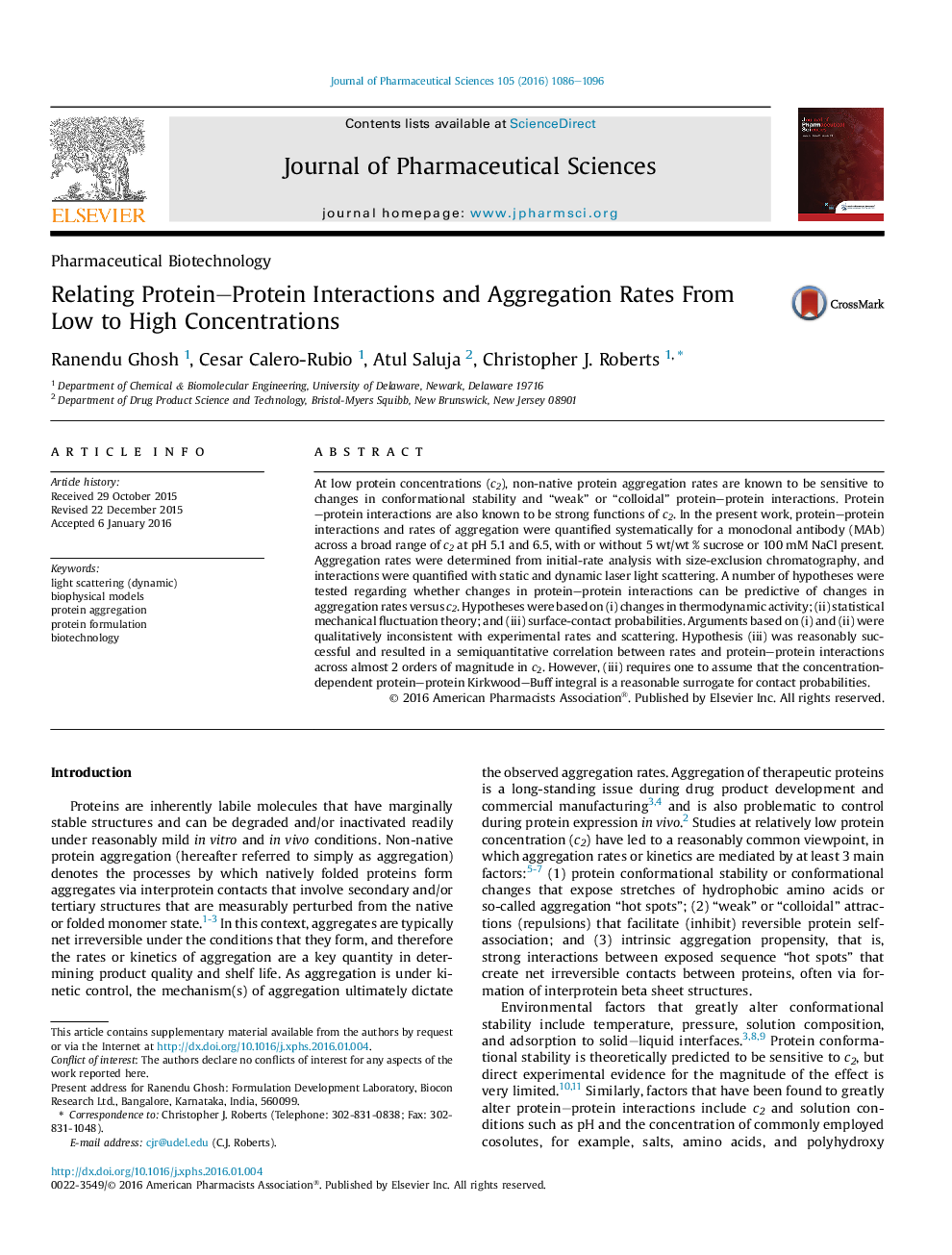| Article ID | Journal | Published Year | Pages | File Type |
|---|---|---|---|---|
| 2484549 | Journal of Pharmaceutical Sciences | 2016 | 11 Pages |
Abstract
At low protein concentrations (c2), non-native protein aggregation rates are known to be sensitive to changes in conformational stability and “weak” or “colloidal” protein-protein interactions. Protein-protein interactions are also known to be strong functions of c2. In the present work, protein-protein interactions and rates of aggregation were quantified systematically for a monoclonal antibody (MAb) across a broad range of c2 at pH 5.1 and 6.5, with or without 5 wt/wt % sucrose or 100 mM NaCl present. Aggregation rates were determined from initial-rate analysis with size-exclusion chromatography, and interactions were quantified with static and dynamic laser light scattering. A number of hypotheses were tested regarding whether changes in protein-protein interactions can be predictive of changes in aggregation rates versus c2. Hypotheses were based on (i) changes in thermodynamic activity; (ii) statistical mechanical fluctuation theory; and (iii) surface-contact probabilities. Arguments based on (i) and (ii) were qualitatively inconsistent with experimental rates and scattering. Hypothesis (iii) was reasonably successful and resulted in a semiquantitative correlation between rates and protein-protein interactions across almost 2 orders of magnitude in c2. However, (iii) requires one to assume that the concentration-dependent protein-protein Kirkwood-Buff integral is a reasonable surrogate for contact probabilities.
Keywords
Related Topics
Health Sciences
Pharmacology, Toxicology and Pharmaceutical Science
Drug Discovery
Authors
Ranendu Ghosh, Cesar Calero-Rubio, Atul Saluja, Christopher J. Roberts,
